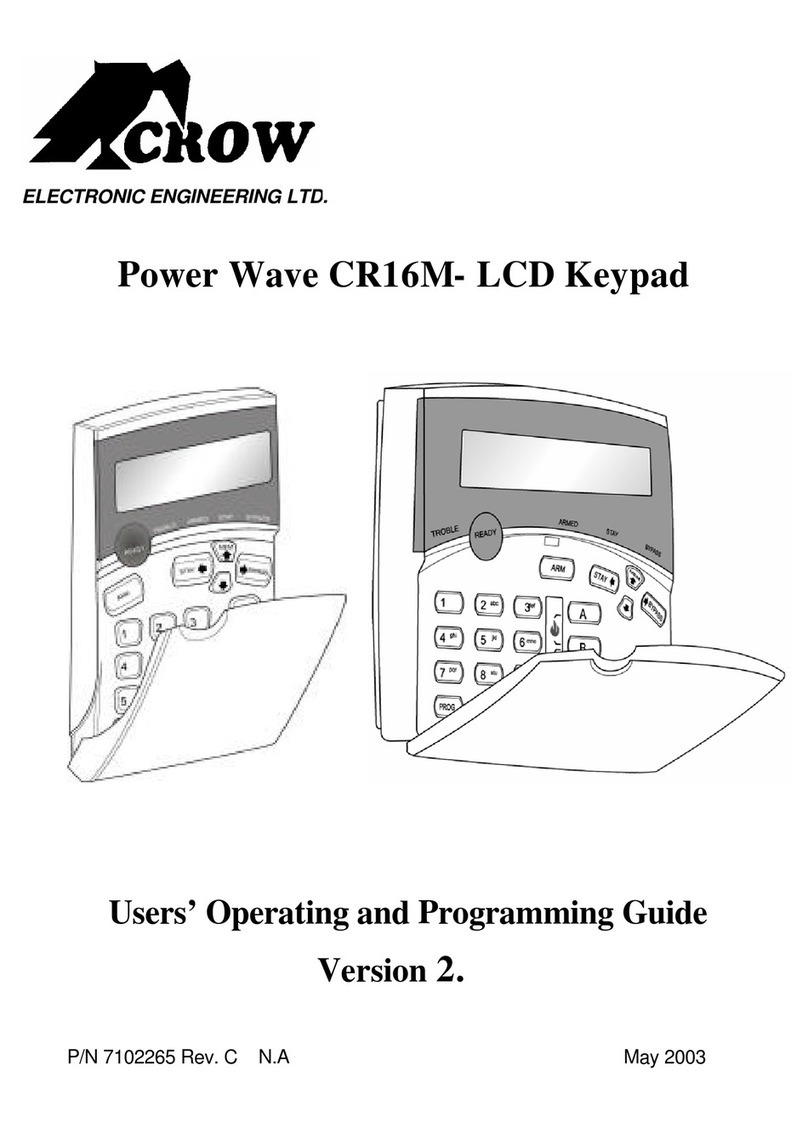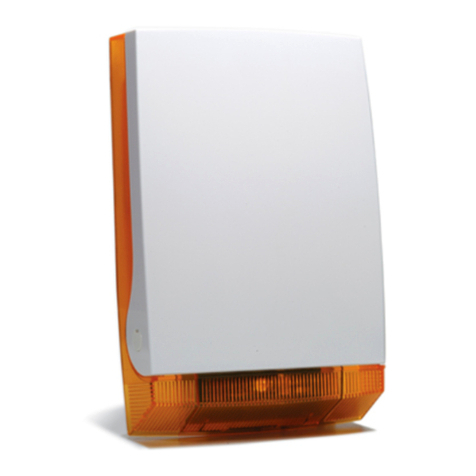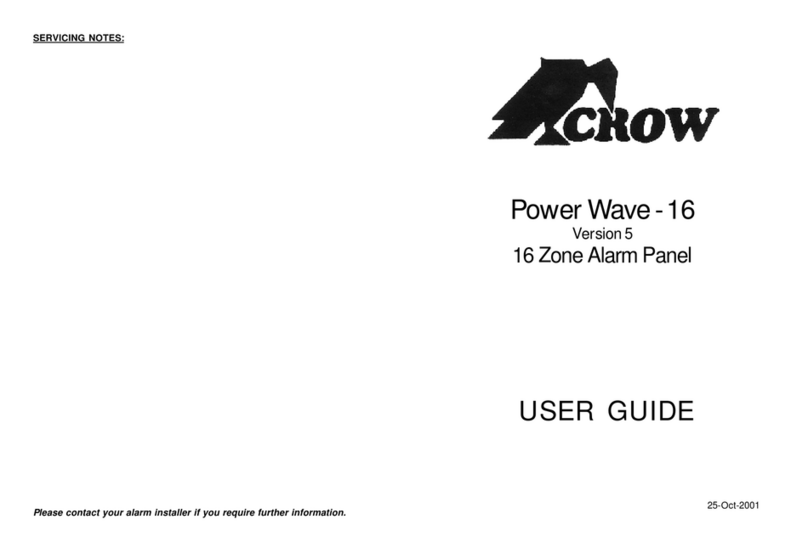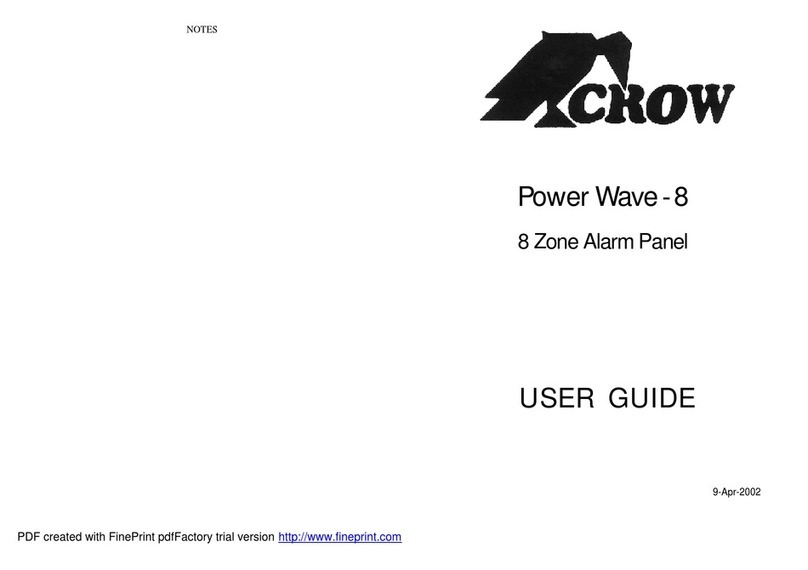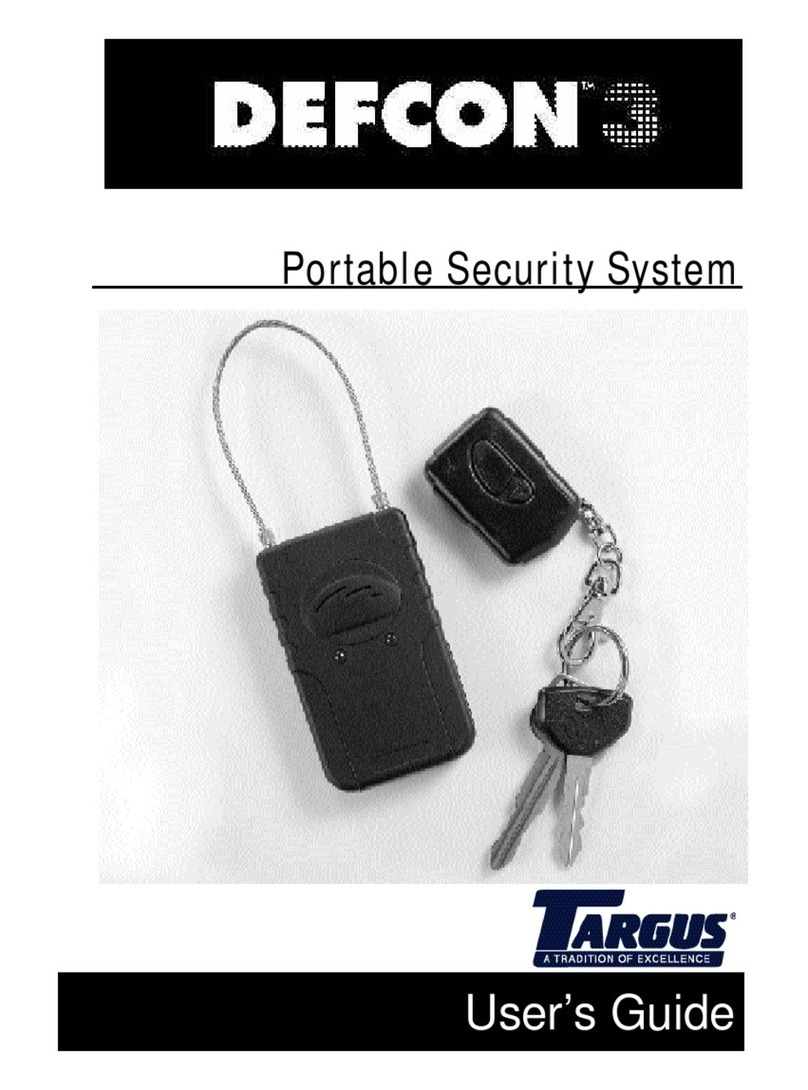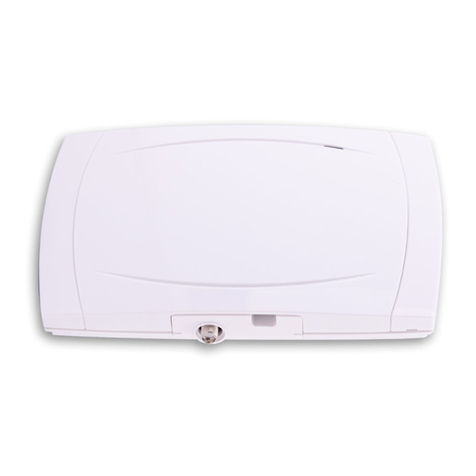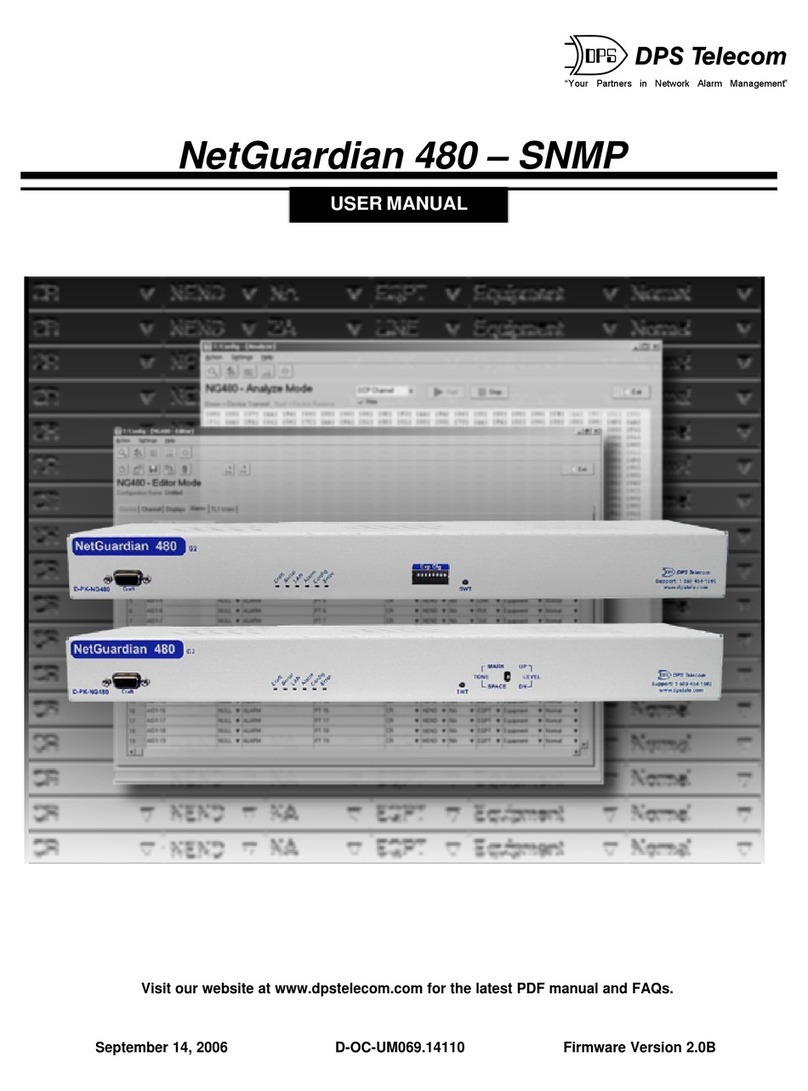Crow Shepherd User manual

thecrowgroup.com Page | 1
Table of Contents
The SHEPHERD™ Architecture........................................................................................................................................ 3
Features and Capabilities ........................................................................................................................................... 3
Overview & Communication Capabilities..................................................................................................................... 5
Installing the SHEPHERD™ ............................................................................................................................................. 9
Web Installer Access................................................................................................................................................ 10
Quick Install Guide .................................................................................................................................................. 11
Voice Device................................................................................................................................................................14
User Types ,Code, Pendants,Tag ............................................................................................................................... 20
User Settings.......................................................................................................................................................... 20
User Options.......................................................................................................................................................... 20
User Type .............................................................................................................................................................. 21
Area Assignment .................................................................................................................................................... 21
Keypad Assignment................................................................................................................................................. 21
Permissions ........................................................................................................................................................... 22
Pendants ............................................................................................................................................................... 22
Access Tag ............................................................................................................................................................. 23
Areas ..................................................................................................................................................................... 24
Area Names ........................................................................................................................................................... 24
Settings ................................................................................................................................................................. 24
Timers and Delays .................................................................................................................................................. 24
Zone Assignment.................................................................................................................................................... 25
User Assignment .................................................................................................................................................... 25
Time Zone Assignment............................................................................................................................................ 26
Signals to Output.................................................................................................................................................... 26
Area account numbers............................................................................................................................................ 26
Beeps to Keypads ................................................................................................................................................... 26
Zones ..................................................................................................................................................................... 27
Zone Status............................................................................................................................................................ 27
Area Assignment .................................................................................................................................................... 28
Working Mode ....................................................................................................................................................... 28
Zones Options........................................................................................................................................................ 30
Camera Assignment ................................................................................................................................................ 30
Zone Key switch ..................................................................................................................................................... 31
Alarm to Output..................................................................................................................................................... 31
Delays and timers................................................................................................................................................... 32
Radio Zones ........................................................................................................................................................... 33
Zone Configuration –features & options examples:.................................................................................................. 33
Re-trigger .............................................................................................................................................................. 36

thecrowgroup.com Page | 2
Output Type ........................................................................................................................................................... 38
Time Zone Assignment ............................................................................................................................................ 38
Timing.................................................................................................................................................................... 40
Add Output ............................................................................................................................................................ 40
Alarm to Output ..................................................................................................................................................... 41
Chime Alarm Reset By ............................................................................................................................................. 42
Report Channels ..................................................................................................................................................... 43
Channel Type ......................................................................................................................................................... 43
Settings ................................................................................................................................................................. 44
Area account numbers............................................................................................................................................ 45
Reporting Options .................................................................................................................................................. 45
Keypads ......................................................................................................................................................................47
Radio Keypads ........................................................................................................................................................ 47
SH-KP Icon Keypad Overview................................................................................................................................... 47
Settings ................................................................................................................................................................. 48
Area Assignment .................................................................................................................................................... 49
Communication ...........................................................................................................................................................50
Remote Access....................................................................................................................................................... 50
Communication Options ......................................................................................................................................... 50
TCP/IP ................................................................................................................................................................... 51
GSM...................................................................................................................................................................... 52
Wi-Fi ..................................................................................................................................................................... 52
DECT ..................................................................................................................................................................... 53
RF .......................................................................................................................................................................... 54
Miscellaneous......................................................................................................................................................... 56
Chime Control......................................................................................................................................................... 56
User Options........................................................................................................................................................... 56
Miscellaneous .............................................................................................................................................................57
Panel Options ........................................................................................................................................................ 57
Voice device (DECT Device) ...................................................................................................................................... 60
Overview................................................................................................................................................................ 61
Control................................................................................................................................................................... 62
Log ........................................................................................................................................................................ 62
…More ................................................................................................................................................................... 62
Disconnect ............................................................................................................................................................. 63
CrowCloud™ Web Services ...........................................................................................................................................63
Mobile Applications ................................................................................................................................................ 68
Appendix 1: Installer Event log messages .......................................................................................................................69

thecrowgroup.com Page | 3
The SHEPHERD™ Architecture
Features and Capabilities
Up To 20 Users User Codes, and/or pendants, and/or Tags
Up to 64 2 Way Wireless Zones
Up to 64 Zones in Total, ISM (RF) , Extender ISM (RF)or/and DECT zones
Working modes options (normal, 24H, Chime, Zone is a key switch…)
Remotely zone configuration
Zone supervision
Zone is assigned to Cameras
…and more
Up to 32 Two Way Wireless Outputs Up to 32 in Total, ISM (RF) ,ISM Extender or/and DECT outputs
Up to 4 Partitions (areas) With Area Name customization
Alarm Detection devices
PIR, CRT, EDS3000AM, Magnet Contact, Glass break detector, Smoke
detector, MAG&Shock, AQ, and many more…see CROW web site for more
devices types
Visual verification Up to 16 indoor or outdoor PIRCAM or mix of both detectors in total
Audio verification SH-AVM is an indoor audio verification module, originating emergency
end to end user phone calls
Home Comfort devices
ACP Smart Plug , DB Doorbell devices, SH-AVM
Safety Devices
Smoke ,Flood, Air Quality , Temperature and Humidity detectors
Signaling Devices
Indoor and Outdoor sirens
Communication
GSM/GPRS/3G/LTE
Ethernet
WI-FI
SMS messages and SMS Control Commands
GSM calls for SH-AVM module full duplex calls
USB-C connector For Factory use Only
Up To 8 report channels
TCP/IP channel
Wi-Fi channel
GSM/GPRS /3G/LTE channel
Backup function between communication report channels
SMS
Full Duplex voice calls on panic event or originating calls (with DECT Voice
devices)

thecrowgroup.com Page | 4
Multi-protocol support to CMS
CROW - (CROW receiver server SW installation required on the CMS side)
SIA DC09 – SIA DCS
SIA-09 (ADM-CID)
SIA Null – event time control
programmable reporting options
Log Events +2000 events
Up To 8 Time Zones
Time zone for Area - Arm/Disarm
Time zone for an output
Time zone for user
Cloud and Mobile Services
Admin Management ,Web installer page, personal page, End User Mobile
App on Android and iOS
Remote Programming Via Web browser interface
Communication Protocol
Freewave2™ Two Way ISM
GFSK with 5 frequencies & LBT
DECT ULE
Frequency Bands (MHz)
868MHz or 916MHz
Operating Range
Up to 600 meters open space
Installer and User Codes 1 Installer code
20 Users
Arming Modes
Total, Stay, Latchkey, Duress, Bypass
ELECTRICAL
Power Input
230VAC 0.4A, 50Hz
Power Supply Type
Internal AC/DC Adaptor 6V/2A
Low Battery Threshold
3.6V (±0.1V) DC
Backup Battery Type Battery Pack 3.7V/2600mAh or 3.7V/4400mAh 3.7V/6000mAh
Time to Charge
Less than 24 hours
Battery Autonomy
1 single battery More than 12 Hours ( w/o DECT active)
Battery Charge Max current
Approx. 500mA
Current Consumption
Average: 120mA (with DECT active 230mA)
PHYSICAL PROPERTIES
Dimensions
233.8 x 165.8 x 31.6 mm
Weight
1.40Kg with battery
Operating Temperature Range
-10° C to 55 °C
Storage Temperature Range
-20 °C to 60 °C
•Security Grade2, Environmental Class II
•Power supply Type A
•ATS category DP3

thecrowgroup.com Page | 5
Overview & Communication Capabilities
Front View
Led Indications
SYSTEM STATUS
LED INDICATION
System is armed
RED
-
-
System is in Arm process
RED Blink
-
-
Burglary Alarm
RED Blink
Panic Alarm
Led state no change
-
System is disarmed and Ready to Arm
Green
-
-
System is disarmed and NOT Ready to Arm
LED Off
-
-
Main power and Back up Battery are OK
-
Green Blink
-
Battery missing OR Battery in charge mode
-
Green / RED Blink
-
AC fail – system working on back up battery Mode
-
RED Blink
-
System working with main communication method
(Ethernet) - - Green Blink
System working with backup communication method
(WIFI or GSM) - - Green / RED Blink
No communication method
-
-
LED Off
Remote configuration connection
-
-
Green
WPS mode
Green Blink
Green Blink
Green Blink

thecrowgroup.com Page | 6
Rear View:
MAC address

thecrowgroup.com Page | 7
ArchitecturePeripherals

thecrowgroup.com Page | 8
Communication Architecture

thecrowgroup.com Page | 9
Installing the SHEPHERD™
Note: Be sure that the control panel is mounted near a socket outlet that is easily accessible. The socket outlet for the power
supply of the control panel should have its own fuse circuit
Use Philips screwdriver to unscrew the 2 holding screws located at the bottom of the panel
The screws are handling by a hidden spring. They cannot be totally removed
Remove the front cover of the panel by tilt it outside
Place the unit on the wall
Use the water level indicator to position it straight on the wall
Mark the holding holes on the wall and drill the wall
Mount the unit on the wall with screws
Ethernet – Connect the Ethernet cable to a router or an internet outlet
GSM – Insert micro-SIM card into the SIM card slot
AC – Plug into a power outlet
Connect the backup battery
Insert back the front cover by tilting it inside
Close the 2 holding screws

thecrowgroup.com Page | 10
Configuring the SHEPHERD™
Overview
Note! : Find all Parameters Definitions in Program Definitions description chapter in this manual
Web Installer Access
Web installer Access link: https://installer.crowcloud.com – Installer should use this link to login into system and to be able
to manage, program and control the system.
Ensure that you have an installer account prior any installation (if not, please ask for it from your Distributor).
After mounting the control panel, connect it to the AC power and to the internet via the Ethernet cable plugged into the
router. Verify communication led is flashing in green color. Panel uses its MAC Address to communicate to the
Crowcloud™, so any search or connect based on panel’s MAC Address or name.
Important Note: Do not use the same account details for Installer and for End user account, accounts must be different.
The installer must verify with his distributor whether he has been assigned to a subgroup of panels or the distributor has a
registration code to use the option of take ownership of certain panels he has purchased from the distributor
Installer opens account with registration code option: https://installer.crowcloud.com and uses the “Sign up” button to open
new installer account with registration code (installer must obtain the registration code from his distributor)
The panel by default automatically connect and register on the CrowCloud™.
The configuration of the SHEPHERD™ panel has to be performed through the web installer interface.
This part of the CrowCloud™ allows access to an online full configuration interface of the SHEPHERD™ control panel.
The below screenshot shows an example of web page screen:

thecrowgroup.com Page | 11
Quick Install Guide
Enter the installer code (by default the code is 000000).
For security reasons, it is highly recommended to change the installer code. Go to "Miscellaneous”, change the installer code
in Panel Options, and submit.
Users codes and names _________________________________________________________________________________
SHEPHERD™ panel can manage up to 20 users, click on User to change its code and set the options if required.
Learn remote pendant by inserting its unique ID number and submit configuration.
Note: to activate pendants, press and hold the two lower buttons of the remote control
device.
Remote led shows green light on the end of learning successfully.
Areas Names __________________________________________________________________________________________
SHEPHERD™ panel offers up to 4 areas (partitions), select the Area # to program and see all options.
Zones _______________________________________________________________________________________________________________________
SHEPHERD panels offers up to 64 wireless zones (ISM /Extender ISM or DECT ULE), click on required zone # to display its
options.
•Click on ADD zone button, select the link type ISM for RF devices, Insert unique ID number of the device, device type
selected automatically or can be select manually. (NOTE: there is special section that shows how to pair DECT devices in
the next para.)
•Set up working mode of the zone (Stay mode, 24-hour…) and more options if required.
•Find installation and learning instructions for each device stored in the CROW website section support and download
•Save configuration by clicking on the save configuration button.
Note: DECT Devices
The pairing of DECT ULE device must be preliminarily pairing performed from "Communication" → "DECT" → "Learn DECT
Device".( NOTE: ensure DECT is enabled)
When the DECT device pairing is done, then you can go to Zones level and assign the paired DECT device ID to a zone
between zones 1 to 64. Chose link type “DECT” and then assign to a Zone.
Click save configuration button to save changes and activate learned zones.

thecrowgroup.com Page | 12
Outputs ______________________________________________________________________________________________
SHEPHERD™ panel offers up to 32 wireless outputs (ISM/ISM Extender and/or DECT ULE e.g. Siren or ACP smart plug), click
on required output to display its options.
ADD Output, select link type “ISM”, Insert unique ID number of the device, select device type and give it a name.
•Find installation and learning instructions for each device stored in the CROW website section support and
download.
Note:
The pairing of DECT ULE device must paired first from "Communication" → "DECT" → "Learn DECT Device". When the DECT
device pairing completed, then you have go to "Outputs" and assign the DECT ID to an output.
Report Channels _______________________________________________________________________________________
SHEPHERD™ panel offers 5 report channels types for events communication, and up to 8 report channels, channel # 8 is
dedicated channel for cloud (cannot be modified), select 1-7 report channel # to display its options.
Set the channel according: 1. Channel Type 2. Settings 3. Protocol type 4. Port no. 5. Area account code 6. Report options.
Select channel type as follow:
TCP / IP Set channel type as TCP/IP Need to set Ethernet enabled to use this type of channel
Wi-Fi Set channel type as Wi-Fi. Need to set Wi-Fi enabled to use this type of channel
GSM IP Set channel type as GPRS 4G.
Need to set 4G IP enabled to use this type of channel in setting "Communication" → "GSM" (see below in para "Communication")
GSM (SMS +Voice) Set channel type as SMS Text Messages (Note: GSM Voice for panic event + AVM module only )
VOICE Set channel type as VOICE (when using AVM module for event announcements )
NOTE: The TCP/IP, GSM IP and GSM SMS channels enabled by default.
Keypads ______________________________________________________________________________________________
Up to 4 Keypads per system, select Keypad # and start to program by Add Keypad button, select Link type “ISM”, insert
Keypad ID # (serial number), and select Device type, save configuration.
•Find installation and learning instructions for each device stored in the CROW website section support and
download.

thecrowgroup.com Page | 13
Communication ___________________________________________________________________________________________________________
Default remote access password is "12345678", it is recommended to modify the password.
Activate communication paths configured in "Report Channels".
TCP/IP:
By default, the DHCP is active; the router will assign an internal IP to the SHEPHERD™. You can assign a dedicated IP address
to the panel by filling its static IP, Subnet mask and its Gateway (address of the router).
GSM IP:
This option activates the GPRS-3G-4G. Fill in the APN of your provider.
GSM SMS:
This option activates SMS features if selected in "Report Channels".
Wi-Fi:
The SHEPHERD™ panel can connect to the router in Wi-Fi mode.
Fill in the network SSID (name of the wireless network), Security type and network password.
DECT:
Pairing of DECT devices in communication->DECT level and go to "Zones" or "Outputs" to assign paired devices.
RF Repeater:
The SHEPHERD™ panel can support wireless repeaters. Follow the repeater instructions for learning Repeater device.
RF
In case of jamming, you can adjust manually the RF Channel frequency range from 1 to 5.
Miscellaneous _______________________________________________________________________________________
There are panel options such as:
Installer code
Duress digit
License time
Timers and Delays
User Options
Chime Control
!!!! Find descriptions of above options and program parameters in Program Definitions Description chapter in this
manual.

thecrowgroup.com Page | 14
Voice Device
Voice device _______________________________________________________________________________________
Audio Verification Module
SH-AVM is an indoor audio verification module. Upon transmission of an alarm signal, the SH-AVM provides remotely
controlled and full duplex functionality between a central station operator and the occupants of the premises. Receiving
audio verification simultaneously with the alarm signal allows the CMS to prioritize and verify alarms before acting, making
the SH-AVM the ideal solution to false dispatching and unverified alarm problems. Up to 5 modules can easily be installed in
any convenient location in your home.
NOTE: make sure your system is equipped with working GSM SIM card.
VOICE DEVICE
The SH-AVM is a DECT module; therefore, AVM module must paired first in communication level->Learn DECT device,
How to pair the voice device module:
1. Ensure to charge the AVM battery first (USB charger)
2. Go to communication level Go to DECT sub level, press on the learn DECT device button, and press the pairing
button of the voice device located in the back side of the voice device and the dial green led in the front should
flashing while the system is running the learning process. Verify in the web installer screen that shows stage 1 and
stage 2 finished and completed and successfully learned message.
3. Next step, assign the pairing voice device to selected voice device # ( 1 to 5) by Add Voice device button.
4. Go to Voice device level and add the new voice device
5. Insert from1 to 16 Outgoing Destination numbers for Panic call event in Communication -> Alarm Phone.
Or commands

thecrowgroup.com Page | 15
6. Insert Phone destination number to make a call by pressing the dial button, USER-> select user #-> phone.( see below
picture.)
7. Save configuration

thecrowgroup.com Page | 16
Call Scenarios:
1. Pressing voice device’s Panic button, panel generates GSM call to any predefined destination number
2. Pressing the Voice device’s Dial button, panel generates GSM call to any predefined destination number
3. Call Disconnect Button
4. End user can Call the control panel and the call can be answered in the Voice device by pressing the
dial button ( no.4)
Reminder Note: Do not forget to insert SIM card to support voice calls
Overview ________________________________________________________________________________________________________________
This level displays general information such as device state, device type, RSSI, battery level, Zones, Users, Outputs
information. Battery and RSSI level statistics per hour, day, week and more.
Diagnostic sub level shows the relevant and current panel communication type is online. Information on Ethernet, GSM,
panel Radio Frequency, Wi-Fi details.
In Addition, there is a walk test tool, which helps installer to test the system, verify all works properly before leaving the site.
•Battery Status
•Ethernet network status with internal connection status.
•Wi-Fi connection status and details
•GSM and GPRS/3G status with RSSI level
•ISM 2-Way Wireless Radio information
Walk Test _________________________________________________________________________________________________________________
Click on "Start Walk Test" to start the test. Check Zones connection status, device type and RSSI signal of each ISM detectors.
By cross walking through all of the detectors connected to the system and activating them, the associated zone will latch up
to allow verification that all zones are commutating properly with control panel.
The results of the walk-test displayed on the screen to verify which detectors triggered during walk-test mode
Press "Exit & Stop Walk Test" button, the walk-test mode will be terminated
Screenshots below, describes triggering detector while system is in walk test mode,
Note: the communication panel led shows orange color while the system is in walk test mode.
Control _________________________________________________________________________________________________________________
This is a level for installer testing the system that allows the system be ARM, DISARM or STAY ARM for each AREA.

thecrowgroup.com Page | 17
More… __________________________________________________________________________________________________________________
More level displays information such as Panel MAC address, Status, version, Panel’s IP address, last connection, Time Zone,
country, there is ability of:
Backup configuration
Panel upgrade (from cloud or local file)
Creating default file configuration (installer can create his own default configuration)
Apply default configuration
Link to personal page
Restart panel
End User Personal Web Page ____________________________________________________________________________
The next step after installation is done End user should run the next link
http://Crowcloud.com and proceed with the user registration to your
SHEPHERD™ panel.
The Crow Cloud personal user webpage allows the end user direct
access to all of his own registered control panels and:
•Monitor and Control panel and connected devices
•Browse alarm pictures and request for immediate take picture
•Get panel connection info
•Manage cloud users
•And more…
If you already have an account, insert your account details and log in,
or create a new user account by clicking "Sign Up"
Creating End User Account steps:
1. Press on the Sign up button
2. Fill in End user account details ( use relevant email address)
3. The password must be alphanumeric and at least 8 characters

thecrowgroup.com Page | 18
4.Submit
5. Run the link www.crowcloud.com again
6. Login with new account details
7. Press on the Add panel to Account button and associate the new account with the end user panel’s MAC Address.
8. Remote access password must be modify from default , please ask your installer to modify it first
9.The user code is by default 1234, recommended to change it.
10. Press on the next button

thecrowgroup.com Page | 19
Mobile Applications ___________________________________________________________________________________
Smartphone iOS and Android
Whether you are at home, at work, on a business trip, or on
vacation, The Crow Pro™ application provides you the easiest way
to monitor and control your SHEPHERD™ :.
• Switch between linked panels (home, office…)
• Control panel state (Arm, Disarm...)
• Check latest events
• See and Operate on active Outputs (Activate/Deactivate)
• See and Operate Zones (Activate/Deactivate Bypass)
• Take picture from connected Pircam(s)
• View stored pictures and Share them (via mail, message...)
• Access to Panel & Users Info
Install the Crow Pro application
on your smartphone
(iOS / Android)
Preliminary Important Note:
Configuration changes will take effect only when you will send the updated configuration to the control panel.
We highly recommend saving your latest configuration before each update.
Other manuals for Shepherd
1
Table of contents
Other Crow Security System manuals
Popular Security System manuals by other brands
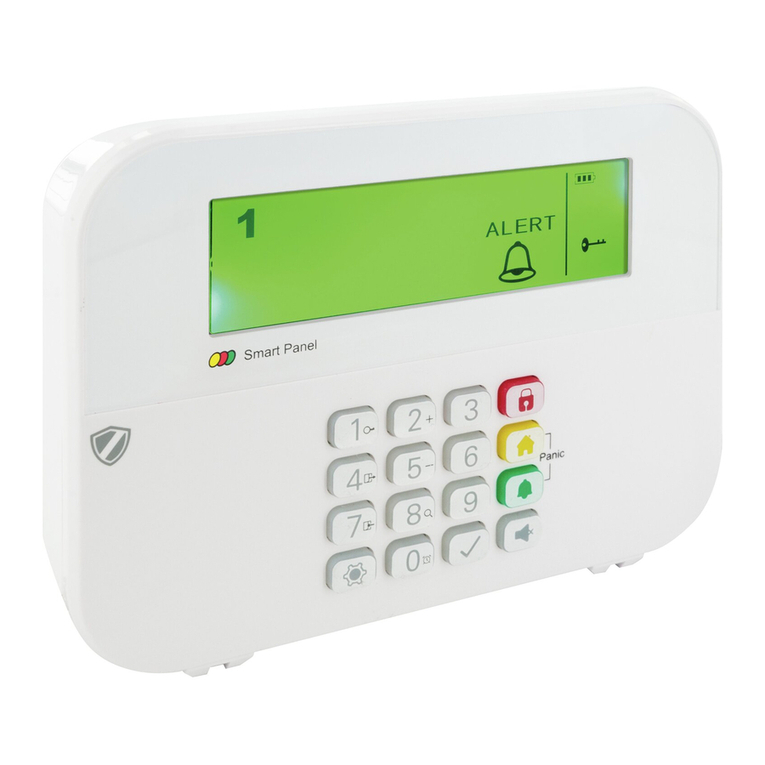
Schwaiger
Schwaiger SECURE4YOU GREEN GUARD instructions

Honeywell
Honeywell VISTA-128FBP user guide

MEGATRONIX
MEGATRONIX Viking VS 315 Installation and operation manual
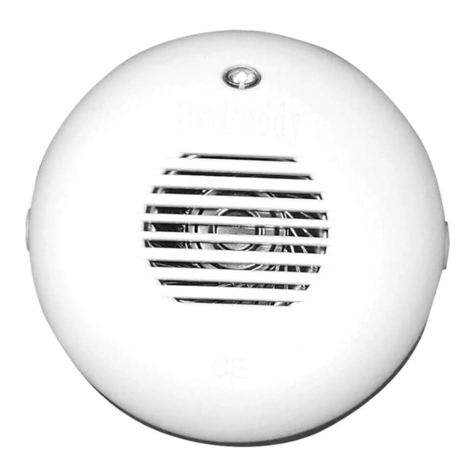
Enuresis Solutions
Enuresis Solutions DryBuddy1 quick guide
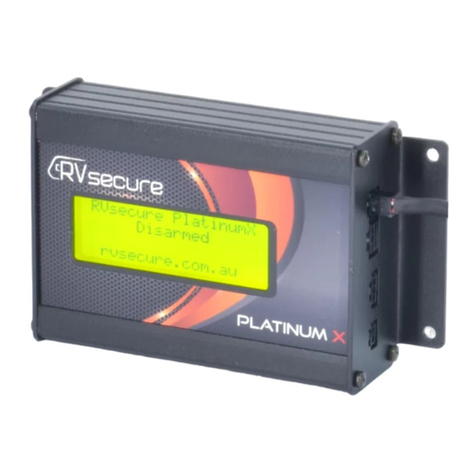
RVsecure
RVsecure PlatinumX installation manual
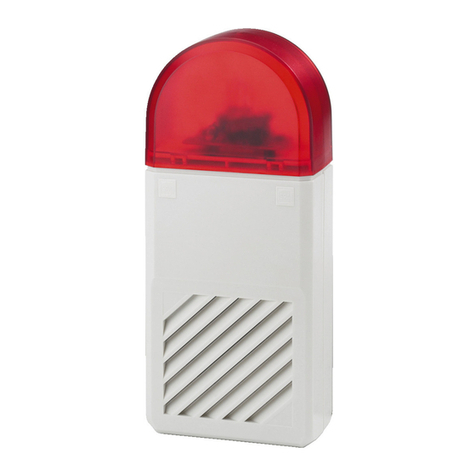
Monacor
Monacor SAG-40 operating instructions
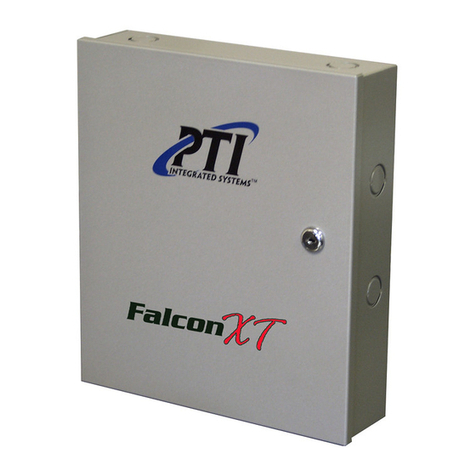
PTI security systems
PTI security systems Falcon XT installation manual
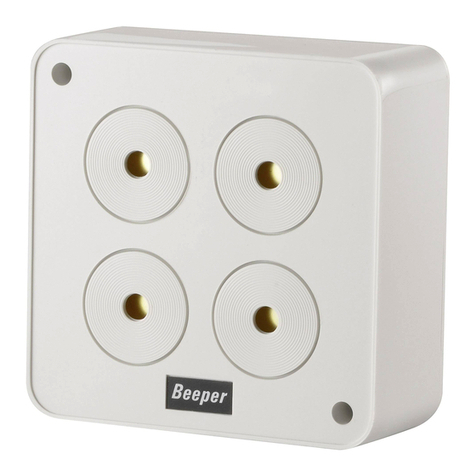
Conrad
Conrad 75 18 39 operating instructions

Vacron
Vacron SA-650CF user manual
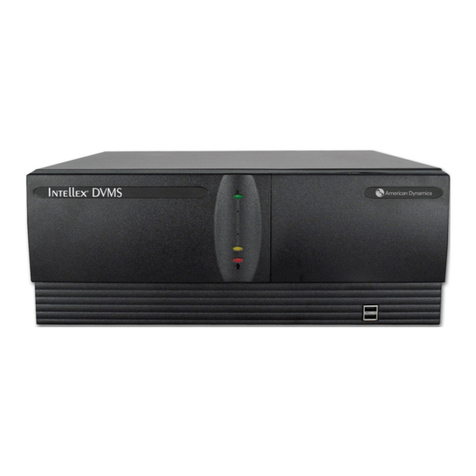
American Dynamics
American Dynamics Intellex Digital Recorder Quick setup guide

EPIC SAFETY
EPIC SAFETY Surf-km installation guide

MEDC
MEDC SM87 LU1 Technical manual

